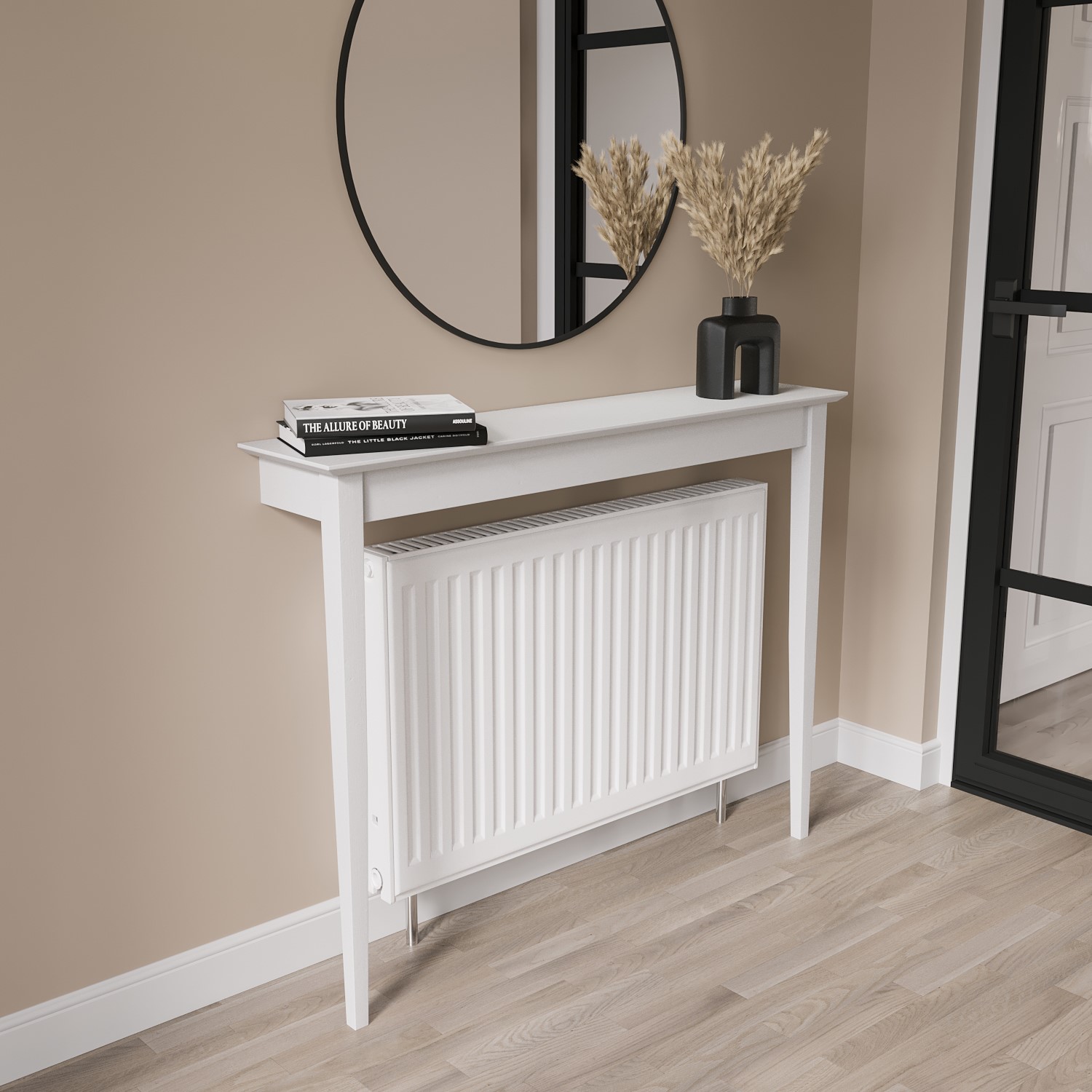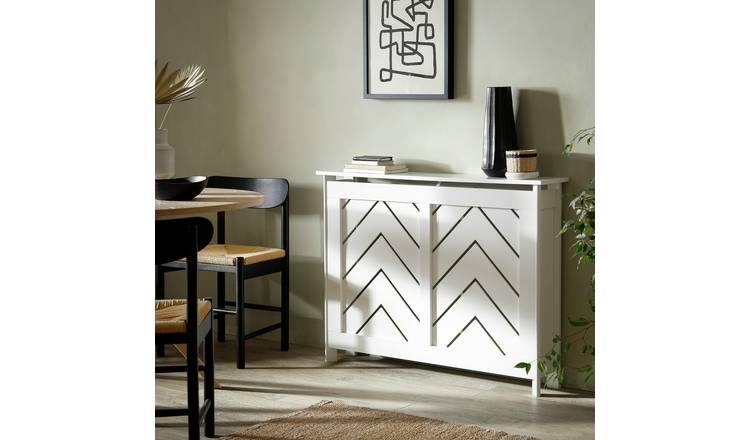Radiator Cover Solutions for Tiny and Big Areas
Radiator Cover Solutions for Tiny and Big Areas
Blog Article
Radiator Covers: Comprehending Materials, Styles, and Benefits
Radiator covers offer both useful and aesthetic objectives within a home, using a range of products such as hardwood, steel, and MDF to match different layout preferences. As designs evolveâEUR" from conventional to contemporaryâEUR" these covers not only boost the visual charm of an area but also add to safety and energy effectiveness. However, picking the best radiator cover entails recognizing the nuances of products, designs, and their connected benefits. This exploration elevates critical questions about just how these components incorporate right into your living atmosphere and what considerations need to direct your option process.
Kinds Of Materials


Wood covers, commonly crafted from hardwoods such as oak or maple, offer a traditional, cozy look that complements standard insides. Their durability and ability to be tarnished or painted add to their convenience. Metal covers, usually made from steel or aluminum, are preferred for their toughness and modern look, frequently including streamlined lines that improve modern spaces.
MDF, a made wood item, is popular for its cost-effectiveness and ease of modification. It can be repainted or finished to match existing decor while supplying a smooth surface. Plastic covers, while much less common, are light-weight and immune to wetness, making them appropriate for damp atmospheres.
Eventually, the choice of material for a radiator cover must align with the homeowner's style preferences, practical requirements, and the certain environment where the cover will be mounted. Each material provides a distinctive character, making certain that there is a choice to fit every taste and setup.
Popular Layout Styles
Stressing visual allure, prominent style styles for radiator covers reflect an array of preferences and interior design trends. Conventional layouts typically include elaborate woodwork and luxuriant outlining, making them ideal for vintage-inspired or timeless insides. These covers typically integrate carved components, providing a warm and welcoming feeling to any type of space.
In contrast, contemporary layouts concentrate on minimal visual appeals, identified by clean lines and understated sophistication. Products such as steel or sleek wood with a smooth surface are commonly used, permitting these covers to blend effortlessly right into modern rooms. Industrial designs, on the various other hand, embrace resources like subjected steel and concrete, including a bold statement to loft or urban setups.
For those looking for an unique touch, bespoke designs supply personalization alternatives that accommodate specific choices, making it possible for property owners to pick shades, patterns, and products that enhance their design. Additionally, farmhouse-style covers integrate rustic elements, featuring distressed wood and basic forms that evoke a relaxing, country charm.
Benefits of Radiator Covers
Radiator covers not only enhance the visual allure of an area but likewise offer numerous sensible advantages that make them a beneficial enhancement to any home. One of the key benefits is security, particularly in families with children or animals. Covers reduce the threat of burns from hot radiator surfaces, ensuring a more secure atmosphere.
In addition, radiator covers can boost energy efficiency. By routing warmth into the room instead than permitting it to escape, they assist keep a consistent temperature, lowering home heating expenses in time. This is particularly useful in older homes where radiator systems might be much less reliable.
Another remarkable advantage is sound reduction. Radiators can occasionally create unwanted noises throughout operation, and covers can help smother these sounds, contributing to a more peaceful home. Radiator covers can be practical, giving additional storage or screen space, consequently taking full advantage of the utility of often-overlooked locations.
Finally, they can shield radiators from dirt and particles, which can impede effectiveness and rise upkeep needs. With these integrated benefits, radiator covers emerge as a functional service for boosting both the performance and style of any type of home environment.
Installment Considerations
Setting up radiator covers calls for careful factor to consider to make sure hop over to these guys both capability and safety and security (Radiator cover). First, analyze the dimensions of your radiator and the surrounding area to make sure a correct fit. Accurate dimensions are essential; an uncomfortable cover can block warmth flow or create security dangers
Following, assess the material of the cover. While wood supplies aesthetic allure, steel options might supply much better sturdiness and heat resistance. Think about the weight of the cover as well; much heavier covers might need added assistance or supports to stay clear of drooping or damage in time.
Ventilation is another important aspect. Covers must include appropriate airflow to stop getting too hot and preserve effective home heating. Search for designs with slats or openings that permit warmth to distribute without blockage.
In addition, make sure that the cover is securely installed to stop accidents, specifically in homes with children or pet dogs. Radiator cover. It's suggested to adhere to the supplier's setup standards carefully and, if necessary, seek advice from a specialist for complex installments
Upkeep and Care Tips
Correct maintenance of radiator covers is important for ensuring their long life and optimum performance. For painted or wood covers, take into consideration a suitable polish or safety finish to maintain their appearance.
Examine the covers regularly for signs of wear or damages, such as cracks or peeling off paint. Resolving these problems promptly can protect against further deterioration. Ensure that the covers are safely fastened and look for any kind of loosened screws or fittings, as vibrations from the radiator can loosen them over time.
In colder months, avoid useful link positioning heavy things or decorative things in addition to the radiator covers, as this can hinder warmth circulation and create unneeded stress and anxiety to the structure. Take into consideration seasonal maintenance by getting rid of the covers for detailed cleaning and examination throughout warmer months when the home heating system is non-active. Taking on these easy treatment tips will certainly boost the efficiency and visual allure of your radiator covers, guaranteeing they offer their function properly for several years to find.

Verdict
In summary, radiator covers offer as aesthetic and practical enhancements to property areas. Careful consideration of setup and maintenance more guarantees the long life and effectiveness of radiator covers in any kind of home environment.
Radiator covers offer both aesthetic and functional functions within a home, offering a variety of products such as metal, mdf, and wood to fit numerous design choices. Picking the appropriate radiator cover includes recognizing the nuances of materials, layouts, and their linked advantages.Highlighting aesthetic charm, preferred layout styles for basics radiator covers show an array of tastes and indoor style fads.Radiator covers not only improve the aesthetic appeal of a room however additionally offer several sensible advantages that make them a beneficial enhancement to any type of home. Think about the weight of the cover as well; larger covers may need added support or supports to prevent sagging or damage over time.
Report this page